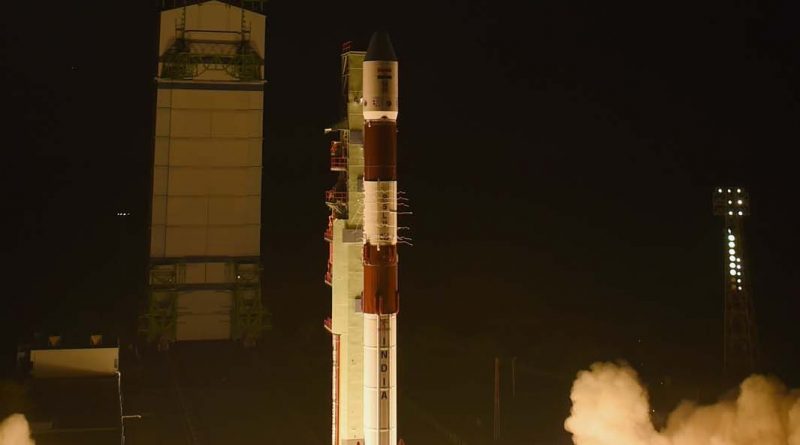Good Orbit for Badr-7 & GSAT-15 after on-target Ariane 5 Launch
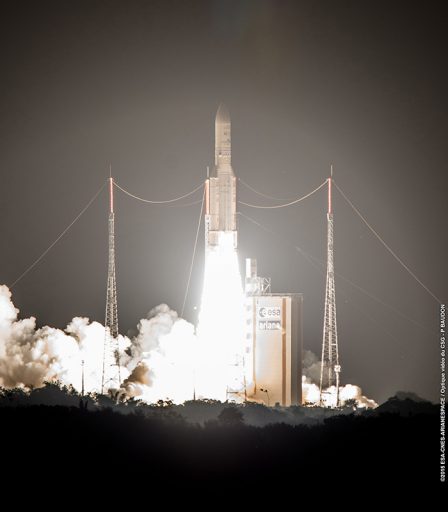
The closing mission of 2015 for Europe’s Ariane 5 rocket delivered its two payloads to an on-target orbit as evident in orbital data released by the Joint Space Operations Center. Ariane 5 lifted off from the Guiana Space Center on Tuesday at 21:34 UTC, carrying the Badr-7 and GSAT-15 satellites to an optimized Geostationary Transfer Orbit.
Rumbling into the dark skies over the Amazon, Ariane 5 swung to its due-easterly ascent path taking the vehicle across the Atlantic Ocean in less than 20 minutes. With its two boosters, Ariane 5 had a total launch thrust of nearly 1,500 metric-ton force, making for a quick initial ascent. The twin boosters separated from the vehicle two minutes 23 seconds into the flight leaving Ariane 5 powered by its cryogenic Vulcain 2 engine that continued firing until T+8 minutes and 54 seconds. Handing off to the second stage, Ariane 5 was set for a burn of its HM-7B engine just shy of 16 minutes, aiming for an insertion point 667 Kilometers in altitude and an injection velocity of 9.34 Kilometers per second.
The VA227 mission targeted an orbit of 247 by 35,786 Kilometers at an inclination of 4.0° and the rocket’s onboard navigation system detected the following orbital parameters at injection:
Perigee: 246.9 km – Apogee: 35,884 km – Inclination: 3.99°
Tracking data became available overnight for the four objects deployed to orbit on this mission (2 satellites, Ariane ESC-A second stage & Sylda payload adapter):
2015-065A – 264.1 x 35,717 km – 3.96° 2015-065B – 259.8 x 35,750 km – 3.96° 2015-065C – 268.0 x 35,759 km – 3.96° 2015-065D – 264.5 x 35,799 km – 4.03°
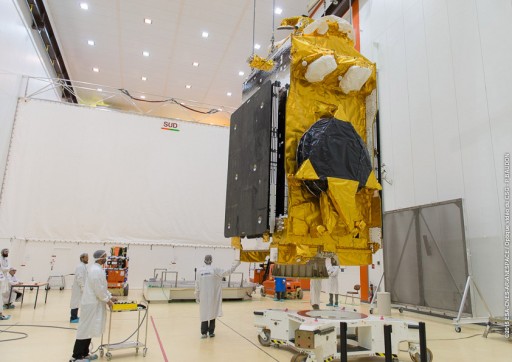
After spacecraft separation 43 minutes into the flight, both satellites were successfully acquired by their respective ground stations and started their initialization sequences in orbit. Both will begin orbit-raising maneuvers late on Wednesday to start their climb towards Geostationary Orbit. Badr-7 is aiming for an orbital position at 26° East while GSAT-15 will be located further east at 92.35°.
Badr-7, built by Airbus Defence and Space, stands 8.5 meters tall and had a launch mass of 5,798 Kilograms based on the Eurostar 3000 satellite platform. Operated by Arabsat, the spacecraft will be co-located with the other operational Badr satellites to form a video hot-spot in orbit. Badr-7 hosts 27 Ku-Band transponders plus a Ka-Band communications payload to deliver broadcast, broadband and telecommunications services to the Middle East and North and Central Africa.
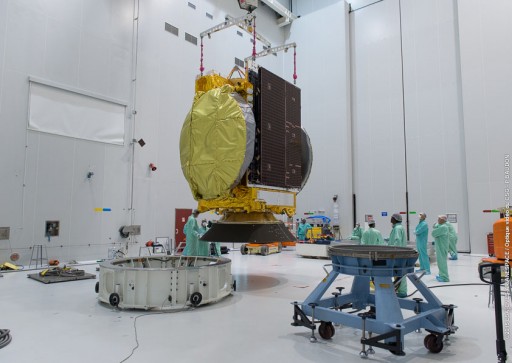
GSAT-15, built and operated by the Indian Space Research Organization, will join the GSAT fleet that has been in operation since the early 2000s to deliver a variety of communications services to India. With a mass of 3,100 Kilograms, GSAT-15 is equipped with 24 Ku-Band transponders that will serve the Indian territory, providing Direct-to-Home television services and supplying comm services to very small aperture terminal (VSAT) operators. The satellite also hosts a GPS Aided Geo Augmented Navigation for Safety of Life (SOL) operations benefiting the civil aviation services.
Coinciding with the successful launch of GSAT-15, the Indian Space Research Organization announced that it selected Arianespace for the launch of GSAT-17 and 18 aboard the Ariane 5 launch vehicle in 2016 and 2017.
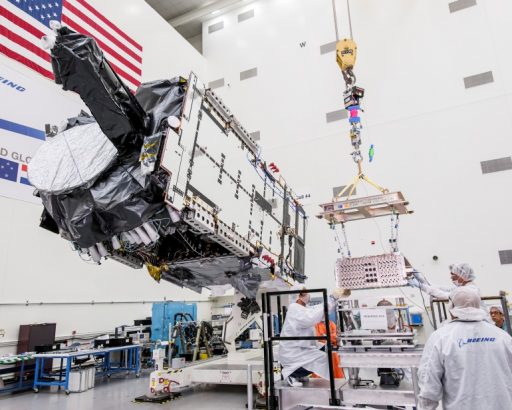
The two satellites will each weigh 3,400 Kilograms and host communications payloads operating in the C-Band, extended C-Band and Ku-Band frequencies. Adding two small GEO satellites to Ariane’s manifest is a welcome opportunity for Arianespace since payloads that can ride in the lower berth of the Ariane 5 had been hard to find in recent months.
Due to the lack of smaller satellites that could ride into orbit beneath the Sylda adapter, Ariane 5 will conduct two single-payload missions to open 2016. Set for launch in late January is Intelsat 29e, a six metric-ton satellite built by Boeing, to be followed by Eutelsat 65 West A, weighing in at 6,600 Kilograms. Intelsat and Eutelsat decided to foot the bill for an entire Ariane 5 launch vehicle to advance their launches by several months, forgoing the trouble of waiting for a smaller co-passenger to be ready.

